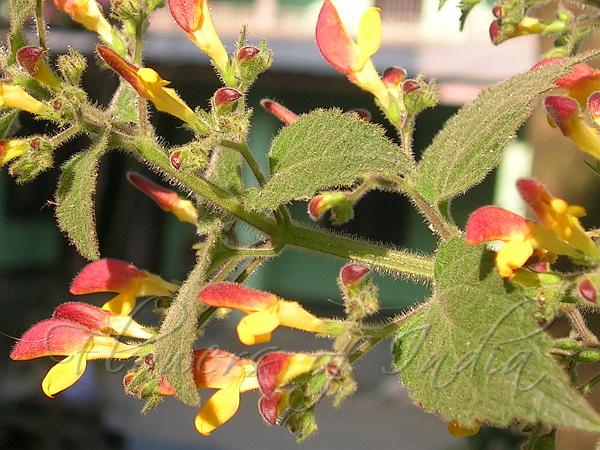|
| Assam Patchouli |
|

|

| File size | 260093 |
| Original date | 11/30/02 12:00 AM |
| Resolution | 1200 x 900 |
| Flash | Flash did not fire, auto |
| Focal length | 8.0mm |
| Exposure time | 1/295s |
| Aperture | 3.2 |
| Focus Distance | |
| Metering Mode | Partial |
| Camera make | NIKON |
| Camera model | E3700 |
| Sensor type |
|
|
|
|
Photo: |
Botanical name: Microtoena patchoulii Family: Lamiaceae (Mint family)
Synonyms: Microtoena insuavis, Microtoena cymosa, Plectranthus patchoulii
Synonyms: Microtoena insuavis, Microtoena cymosa, Plectranthus patchoulii
Assam Patchouli is a herbs 1-2 m tall, with
spreading hairs, velvety, base somewhat woody, much branched. Stalks of
stem leaves are 1.5-4 cm, blade usually triangular-ovate, 2.5-9 ×
2-7.5 cm, bristly, densely so below on veins, base broadly wedge-shaped
to heart-shaped, margin coarsely toothed, tip pointed. Flowers are
borne in 1-sided cymes in leaf axils or in panicles at branch ends.
Floral leaves are 0.8-2.1 x 0.3-1.5 cm, gradually reduced toward stem
end, bracts linear, about 2-3 mm. Sepal cup is about 3 x 1.7 mm,
densely glandular velvety and hairy, teeth subequal, lanceolate, to as
long as calyx. Fruiting calyx is dilated, conspicuously netted. Flower
are about 1.5 cm, hairless, mouth about 3 mm wide. Upper lip are purple
or brown, about 7 mm, base flat, tip notched. Lower lip is oblong,
middle lobe narrowly ligulate, about 0.7 x 0.4 mm; lateral lobes ovate,
about 2 mm wide. Nutlets are black-brown, triquetrous, ovoid, about 1.6
x 1.3 mm, smooth. Assam Patchouli is found in forests, open grassy
slopes in NE India, China and Myanmar, at altitudes of 1100-2000 m.
Flowering: October-February.
Medicinal uses:  Assam Patchouli is an aromatic herb used for coughs, asthma, abdominal
pain, and enteritis.
Assam Patchouli is an aromatic herb used for coughs, asthma, abdominal
pain, and enteritis.
 Assam Patchouli is an aromatic herb used for coughs, asthma, abdominal
pain, and enteritis.
Assam Patchouli is an aromatic herb used for coughs, asthma, abdominal
pain, and enteritis.
| Identification credit: P. K. Singh | Photographed in Imphal, Manipur. |
• Is this flower misidentified? If yes,